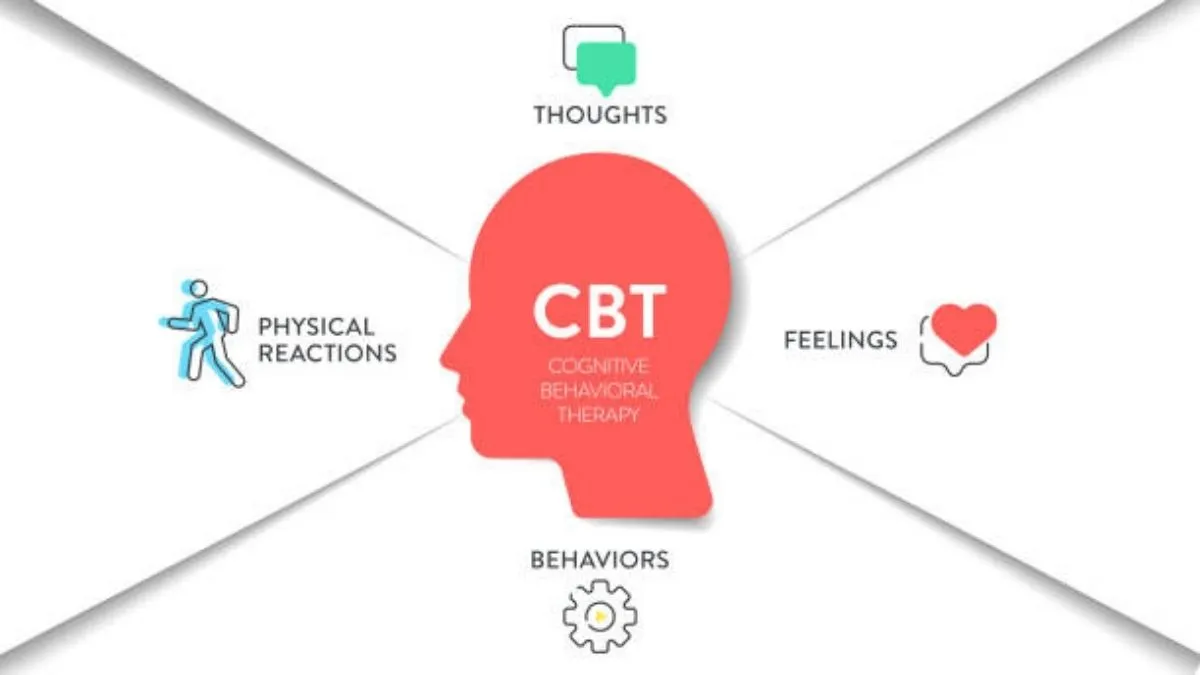HEALTH AND FITNESS
CBT for Depression — A Lifeline for Emotional Wellness

If you or someone you care about are walking through the thick fog of depression, hopelessness, and tiredness, CBT for Depression provides a well-tested, evidence-backed way forward to recovery. Here, we’ll look at what CBT is, how CBT works, clinical evidence, some practical steps that you can attempt, and how to find good-quality therapy (including through Los Angeles Mental Health).
Table of Contents
Why CBT Matters in Depression Treatment?
Depression is one of the most common mental illness disorders globally, and it’s estimated that there are millions of individuals afflicted. Traditional treatment is often to resort back to medication or supportive talk therapy. Still, one of the best evidence-based psychotherapies for depression is Cognitive Behavioral Therapy (CBT).
- CBT is goal-oriented, organized, and time-limited.
- It helps identify, challenge, and change the negative modes of thinking and the depressive behaviors that maintain depression.
- CBT for Depression has evolved through decades of empirical research and clinical practice with robust efficacy—either on its own or in combination with medication.
Evidence:
- One meta-analysis of 115 trials speaks to CBT’s effectiveness in reducing symptoms of depression. PMC
- Combining CBT with medication increases outcomes, adherence, and long-term prevention of relapse. The Hospitalist Blog+1
- Neuroscience research shows CBT reinforces and reorganizes brain circuits involved in cognitive control and emotion regulation. Stanford Medicine
How CBT for Depression Actually Works?
CBT relies on the assumption that feelings, actions, and thoughts are connected. Distorted or negative thoughts direct how we feel and act—and the actions then sustain the thoughts. In depression, this creates hopelessness spirals, withdrawal, and rumination.
Core Components of CBT for Depression
1. Cognitive Restructuring
- Identify “automatic thoughts” (e.g. “I’m worthless,” “Nothing will ever change”).
- Evaluate their validity and utility.
- Dispute distortions like all-or-nothing thinking, overgeneralization, or emotional reasoning.
- Aaron Beck emphasized that most depressed people operate with a cognitive triad: hopeless views of self, world, and future. Wikipedia
2. Behavioral Activation
- Depression promotes withdrawal and avoidance.
- Behavioral activation schedules small, positive, or reinforcing activities—even when motivation is low.
- Gradually, life engagement increases and the cycle of low mood and inactivity weakens. The Hospitalist Blog+1
3. Relapse Prevention & Maintenance Strategies
- Maintain gains after formal treatment.
- Recognize early warning signs.
- Apply thought-monitoring skills and reinforce healthy habits.
- Research shows relapse rates after CBT are lower compared to ongoing medication alone. The Hospitalist Blog+1
4. Homework & Practice Outside Sessions
- Structured exercises: thought logs, behavioral experiments, and reflections.
- Practice between sessions is crucial to embed new patterns.
Variations & Adaptations
CBT is not monolithic. Therapists adapt it to the individual’s culture, context, and needs:
- Internet-based CBT / Teletherapy — remote delivery via video or modules. The Hospitalist Blog
- Mindfulness-based Cognitive Therapy (MBCT) — merges CBT with mindfulness to prevent relapse.
- Transdiagnostic CBT — treats depression, anxiety, and related disorders using shared processes.
- Modular or Brief CBT — suitable for primary care or low-resource settings. The Hospitalist Blog+1
Benefits & Limitations of CBT for Depression
Benefits
- Strong evidence base: Numerous trials and meta-analyses support efficacy. PMC+1
- Long-term impact: Skills persist after treatment ends.
- Medication interaction: CBT + antidepressants is often more effective than either alone.
- Active, skill-based: Patients gain tools, not passive treatment.
- Reduced relapse risk: Awareness of early warning signs lowers relapse.
Limitations & Challenges
- Motivation required: Can feel daunting in severe depression.
- Access/cost issues: Qualified CBT therapists may be limited or expensive.
- Not a panacea: Complex or resistant depression may need adjuncts.
- Effort essential: Outcomes depend heavily on homework and engagement.
Practical Steps You Can Take Today
While not a substitute for therapy, beginner-friendly CBT techniques include:
- Thought Log / Automatic Thought Record
- Monitor situation, initial thought, and intensity (0–10).
- Weigh evidence for/against thought.
- Develop balanced alternatives.
- Track mood shifts.
- Behavioral Scheduling / Activation
- Plan daily activities with mastery or enjoyment (e.g. walk, call a friend).
- Gradually increase duration or difficulty.
- Behavioral Experiments
- Test unhelpful thoughts (e.g. “If I speak out, I’ll be criticized”).
- Run small, real-life experiments.
- Compare outcome vs. expectation.
- Mindfulness or Pause & Observe Technique
- See thoughts as passing events, not absolute truths.
- Reduce rumination and gain distance.
- Preventative Maintenance
- Continue thought recording after mood improves.
- Use warning sign checklists (e.g. sleep changes, withdrawal, negative self-talk).
- Build resilience through repetition.
Accessing a CBT Specialist
Tips for finding a trained CBT therapist:
- Prioritize clinicians with formal CBT training/certification.
- Ask about experience with depression specifically.
- Inquire if they follow manuals/evidence-based protocols.
- Explore teletherapy or online CBT programs if underserved.
- Confirm logistics (sessions, cost, cancellation, insurance).
If in Los Angeles, consider CBT for Depression services from Los Angeles Mental Health.
Real-World Success Stories & Evidence in Practice
- Stanford Medicine: Studies show CBT boosts brain circuits for cognitive control and predicts treatment response.
- Meta-analysis (115 trials): Demonstrates long-term symptom improvement. PMC
- Clinical practice: Therapists integrate CBT with interpersonal therapy, mindfulness, or medication. The Hospitalist Blog
Overcoming Common Barriers & Myths
- Myth 1: “CBT is just positive thinking.”
False — CBT uses structured cognitive restructuring and behavior change. - Myth 2: “I’m too depressed to do CBT.”
Skilled therapists scale steps to your ability and build gradually. - Myth 3: “Only psychoanalysis works.”
CBT provides effective and often quicker results. Hybrids can be useful. - Myth 4: “CBT works only for mild depression.”
Evidence supports CBT across mild, moderate, and severe cases (with meds). The Hospitalist Blog+1
Monitoring Progress & When to Make a Change
- Track symptoms with standardized tools (e.g. PHQ-9) every few weeks.
- Compare mood, activity, sleep, and social contact over time.
- Adjust therapy style if progress stalls.
- Therapists may add alternative methods (schema therapy, medication, etc.).
Final Thoughts!!
If you are experiencing depression, CBT for Depression is one of the most evidence-based and effective paths to recovery.
- Begin small: thought records, behavioral activation, experiments.
- Add professional guidance when possible.
- Remember: recovery is not linear—there will be setbacks.
With dedication, structured strategies, and support, the mist begins to lift. CBT offers not just treatment but a way of re-mapping how you engage your mind, emotions, and world
-

 GENERAL5 months ago
GENERAL5 months agoChristofle – For Those Who Dream of Family Heirloom Silver
-

 SPORTS7 months ago
SPORTS7 months agoDiscover the World of Football with Streameast: Watch Your Favorite Leagues and Tournaments
-

 GENERAL4 months ago
GENERAL4 months agoUncovering the World of кинокрадко: The Dark Side of Film Piracy
-

 GENERAL2 months ago
GENERAL2 months agoATFBooru: Anime, Gaming, and Subculture Imageboard























